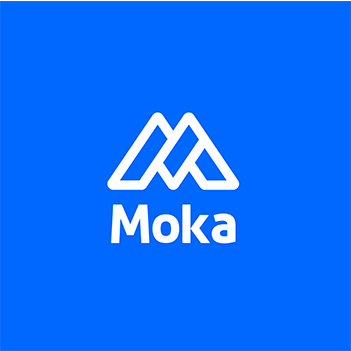Effective Recruitment Strategies for Every Career Stage

Recruitment strategies evolve as candidates progress through their careers, highlighting the importance of understanding 'From Interns to Executives: How Recruitment Strategies Differ by Level.' You must adapt your approach to meet the expectations of interns, mid-level professionals, and executives. Data-driven methods, such as analyzing career progression metrics, help establish benchmarks for experience levels. Historical studies show that tailored strategies align job descriptions with industry standards, reducing mismatches and improving hiring outcomes.
Key Takeaways
Adjust hiring plans to fit where candidates are in their careers. Interns want to learn, mid-level workers aim to grow, and leaders focus on company goals.
Create a good image of your company to draw skilled workers. Share your workplace values and achievements on sites like LinkedIn to stand out.
Make applying easy so more people will try. A simple process helps more finish and makes applying better.
From Interns to Executives: How Recruitment Strategies Differ by Level

Recruitment Strategies for Interns
Recruiting interns requires a focus on early talent identification and relationship building. Studies reveal that 94% of employers consider internships crucial for spotting potential talent. You can achieve this by partnering with universities and attending job fairs. Building relationships with academic institutions ensures access to a pool of skilled candidates. Data-driven strategies, such as personalized messaging, can boost engagement rates by 40%. Additionally, showcasing intern achievements through expos or presentations highlights the value of your program and attracts top talent.
Simplifying the application process is another key strategy. Interns often lack extensive experience, so a straightforward process encourages more applications. Analyzing career progression data also helps set realistic expectations for growth, aligning candidates' aspirations with your organization's goals.
Recruitment Strategies for Mid-Level Professionals
Mid-level professionals prioritize career growth and work-life balance. Highlighting opportunities for advancement within your organization can attract these candidates. Using targeted job boards and professional networks ensures your job postings reach the right audience. Skill-based assessments can further refine your selection process, ensuring candidates possess the expertise required for the role.
Emphasizing benefits like flexible schedules and wellness programs also appeals to mid-level professionals. These perks demonstrate your commitment to their well-being, making your organization more attractive.
Recruitment Strategies for Executives
Executive recruitment demands a strategic approach. Partnering with executive search firms can help identify candidates with the leadership qualities your organization needs. Research shows that diverse leadership teams excel at navigating challenges and fostering innovation. Expanding outreach to underrepresented groups and designing inclusive job descriptions can enhance diversity in your leadership team.
A strong employer reputation is essential for attracting executives. Sharing your company’s mission and success stories aligns your vision with candidates' career goals. Competitive compensation packages and networking opportunities further strengthen your appeal to top-tier talent.

Recruitment Strategies for Interns

Build a Strong Employer Brand
A strong employer brand is essential for attracting top intern candidates. It positions your company as a desirable place to work and grow. Research shows that 85% of job seekers would consider leaving their current jobs for a company with a strong employer brand. You can achieve this by showcasing your company culture, values, and success stories on platforms like LinkedIn or Glassdoor. Highlighting employee testimonials and achievements also reinforces your commitment to nurturing talent.
Additionally, defining your business needs helps identify areas where interns can contribute effectively. Clear communication of roles ensures that interns understand their responsibilities, fostering a sense of purpose and belonging. Hiring international interns can further enhance your workplace by promoting diversity and innovation.
Leverage Campus Recruitment and Job Fairs
Campus recruitment and job fairs remain effective strategies for sourcing intern talent. These events allow you to connect directly with students and showcase your organization. Studies reveal that nearly 90% of returning interns convert to full-time hires, demonstrating the long-term value of these efforts.
Virtual career fairs have also gained popularity, with more employers participating each year. This approach expands your reach and provides access to a broader pool of candidates. Collaborating with university career centers ensures your presence at these events, increasing your visibility among potential interns.
Type of Intern | Conversion Rate to Full-Time Hire |
|---|---|
Returning Interns | Nearly 90% |
Nonreturning Interns | 43.5% |
Offer Learning and Development Opportunities
Interns value opportunities to learn and grow. Offering structured training programs and mentorship initiatives can make your organization stand out. Data shows that 50-75% of interns transition to full-time roles, highlighting the importance of investing in their development.
Learning opportunities also reduce hiring costs by creating a reliable talent pipeline. Interns bring fresh perspectives and knowledge of emerging technologies, which can drive innovation. By providing these opportunities, you not only attract high-quality candidates but also enhance your employer brand.
Benefit Description | Evidence |
|---|---|
Development of a reliable talent pipeline | 50 to 75 percent of interns are hired full-time after their internship. |
Contribution to innovation | Interns bring new ideas and perspectives that challenge conventional thinking. |
Fresh insights on technology | Interns provide knowledge of emerging technologies, keeping companies competitive. |
Simplify the Application Process
A straightforward application process encourages more candidates to apply. Complicated or lengthy processes often deter applicants. A CareerBuilder study found that 60% of job seekers abandon applications due to complexity. Simplifying your process can significantly reduce this abandonment rate.
Use clear instructions and avoid requiring excessive documentation. Online forms should be mobile-friendly and easy to navigate. Providing timely updates on application status also improves the candidate experience. These steps ensure that your recruitment process aligns with the expectations of today’s tech-savvy interns.
Recruitment Strategies for Mid-Level Professionals
Highlight Career Growth and Advancement
Mid-level professionals often seek roles that offer clear paths for career progression. You can attract these candidates by emphasizing opportunities for growth within your organization. Highlighting internal promotion rates or showcasing success stories of employees who advanced through the ranks can make your company more appealing. Data-driven strategies also play a crucial role here. For example, establishing experience benchmarks ensures you align job descriptions with industry standards, reducing mismatches and improving hiring outcomes.
Evidence Type | Description |
|---|---|
Experience Benchmarks | Data-driven strategies help establish benchmarks for the minimum years of experience needed for specific roles. |
Alignment with Industry Standards | External data sources provide insights to align job descriptions with market expectations, reducing candidate mismatches. |
Enhanced Candidate Engagement | Personalized messaging based on analytics improves candidate response rates and engagement during the recruitment process. |
Use Targeted Job Boards and Professional Networks
Targeted job boards and professional networks are essential tools for reaching qualified mid-level professionals. Studies show that 50% of all applications come from job boards, and 25% of hires originate from these platforms. Using both generic and niche job boards maximizes visibility for your open roles. Professional networks like LinkedIn also allow you to connect with candidates who match your criteria.
50% of all applications received by companies come from job boards.
25% of candidates who were hired applied through job boards.
Utilizing both generic and niche job boards maximizes visibility for open roles.
Emphasize Work-Life Balance and Benefits
Work-life balance and benefits are critical factors for mid-level professionals when choosing a job. A significant number of women have declined offers due to concerns about work-life balance. Additionally, 67% of men and 78% of women consider this a vital factor in their decisions. Post-pandemic, younger generations, including Gen Z and millennials, report higher satisfaction with remote and hybrid work models. Flexible work policies can help you attract these demographics, as 77% of Gen Z and 75% of millennials would consider changing jobs if required to return to full-time on-site work.
67% of men and 78% of women prioritize work-life balance.
77% of Gen Z and 75% of millennials prefer flexible work policies.
Conduct Skill-Based Assessments
Skill-based assessments provide a reliable way to evaluate mid-level professionals. These assessments focus on practical abilities rather than resumes, offering a more accurate prediction of job performance. Research shows that 63% of recruiters already use skill-based hiring, and 94% believe it predicts performance better than traditional methods. By 2025, 81% of companies are expected to adopt this approach.
Statistic | Value |
|---|---|
Percentage of recruiters adopting skill-based hiring | 63% |
Employers believing skills-based hiring predicts job performance better than resumes | 94% |
Companies using skills-based hiring in 2025 | 81% |
Employers viewing skills-based hiring as the future of recruitment | 95% |

Skill-based assessments not only improve hiring accuracy but also enhance diversity by focusing on abilities rather than credentials. This approach aligns with the broader trend of tailoring recruitment strategies to different career stages, as discussed in "From Interns to Executives: How Recruitment Strategies Differ by Level."
Recruitment Strategies for Executives
Partner with Executive Search Firms
Executive search firms specialize in identifying top-tier talent for leadership roles. Partnering with these firms allows you to access a broader pool of qualified candidates. Their expertise in sourcing C-suite professionals ensures that your organization finds individuals with the right skills and experience. These firms also use data analysis to measure key metrics, helping you assess the effectiveness of your recruitment strategies.
A clear and respectful recruitment process further enhances your employer reputation. Timely feedback and professional interactions demonstrate your organization’s commitment to excellence, attracting high-caliber candidates. Companies that embrace diversity in leadership also benefit from improved decision-making and stronger team dynamics.
Align Leadership Vision and Company Goals
Executives seek roles where their leadership vision aligns with organizational goals. Clearly communicating your company’s mission and long-term objectives helps attract candidates who share your values. This alignment fosters a sense of purpose and ensures that new leaders contribute effectively to your strategic direction.
You can also use interviews to assess whether candidates’ leadership styles complement your company culture. This approach minimizes potential conflicts and promotes a cohesive leadership team.
Offer Competitive Compensation and Perks
Competitive compensation packages play a crucial role in attracting executives. A LinkedIn survey revealed that 71% of employees would accept a pay cut for better work-life balance or job flexibility. Offering perks like remote work options and wellness programs makes your organization more appealing.
Sign-on bonuses are another effective strategy. A WorldatWork survey found that 52% of companies use these bonuses to attract talent in competitive fields. Transparent compensation practices also improve retention rates by 30%, according to PayScale research.
Build Relationships Through Networking and Referrals
Networking and referrals are essential for executive recruitment. Many executives are passive job seekers, making relationship-building a critical strategy. Encourage board members and senior leaders to refer candidates, as this establishes trust in the process.
You can also implement an executive referral program that rewards quality recommendations. Engaging with industry associations and attending conferences helps you connect with potential candidates. Trusted advisors can provide valuable insights into the suitability of candidates, further enhancing your recruitment efforts.
Strategy | Description |
|---|---|
Trust Building | Encourage board members and senior leaders to refer candidates. |
Executive Referral Program | Reward quality recommendations to enhance the recruitment process. |
Engaging Advisors | Utilize trusted advisors for insights into potential candidates. |
Tapping into professional networks and attending industry events ensures you stay connected with top talent. These efforts strengthen your ability to recruit executives who align with your organizational goals.
Tailoring recruitment strategies to career stages ensures you attract the right talent. Interns value growth opportunities, mid-level professionals prioritize career advancement, and executives seek leadership alignment.
Evidence | Description |
|---|---|
Flexible work arrangements encourage retention. | |
60% of employees | Leave due to unclear career paths. |
69% of companies | Struggle to hire effectively. |
Data-driven methods analyze career progression to set experience benchmarks.
Personalized messaging improves engagement and recruitment outcomes.
Evaluate your current strategies to align with these insights and attract top talent effectively.
FAQ
What is the most effective way to attract interns?
Focus on building a strong employer brand and offering learning opportunities. Attend campus recruitment events to connect with potential candidates directly.
How can you ensure mid-level professionals stay engaged during recruitment?
Highlight career growth opportunities and emphasize work-life balance. Use skill-based assessments to showcase your commitment to hiring based on expertise.
Why is networking crucial for executive recruitment?
Executives often rely on referrals and professional connections. Building relationships through networking ensures you access passive candidates who align with your leadership needs.
See Also
Complete Strategies for Streamlining Your Recruitment Journey
Enhance Your Hiring Approach Using MokaHR’s Tracking Tool
Unlock Recruitment Opportunities with MokaHR's Automation Tools
The Role of Management Systems in Improving Candidate Choices
Five Major Challenges in Recruitment Automation and Solutions
From recruiting candidates to onboarding new team members, MokaHR gives your company everything you need to be great at hiring.
Subscribe for more information

